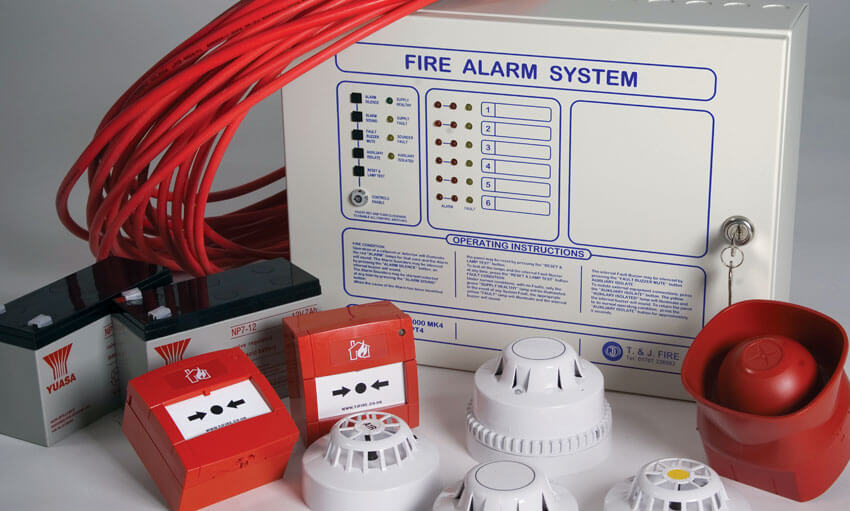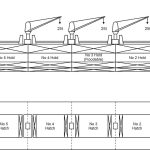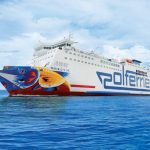
An Autroprime brand fire detection panel is installed on the bridge of an offshore supply vessel. It is set to automatically recognize any signal in the detection loops.
No matter what size vessel you’re on, there are few things worse than a fire on board. Fire detection systems are a vital part of the firefighting systems on most vessels.
Fire detectors are designed to provide a visible and audible alarm on the vessel to indicate the location of a fire. The detectors throughout the ship are wired to a fire control panel that provides visual and auditory alerts and possibly alarms in other parts of the vessel as well.
When tripped, detectors send a signal to the fire control panel in a location manned around the clock, usually on the bridge. There may also be fire alarm panels in other manned spaces, such as the engine room or the gangway, which may be the only manned spaces at times when the vessel is in port.
Depending on the type of fire control system, the alarm signal may generate an automatic activation of the fire suppression system, but most often the alarm will be investigated before the crew activates the suppression devices.
Some types of detectors may sense a rapid rise in temperature in a brief period of time, for instance in a reefer flat or the engine room, said Capt. Sean Tortora, a professor at the U.S. Merchant Marine Academy and author of the book Study Guide for Marine Fire Prevention, Firefighting, and Fire Safety.
Tortora noted that there are only five U.S. Coast Guard-approved shipboard fire detection systems. Of these, four are automatic alarms, smoke detectors, manual alarm boxes only and manual/automatic systems. The fifth type is the crew on watch who can raise an alarm using the manual pull boxes or by other means.
Many vessels have a mix of the five types, most often automatic and manual stations.
In some installations, the automatic detector and fire suppression system are one unit, such as a sprinkler head that starts spraying water or foam when the temperature rises enough to set off the detector.
The manual side of the system is pull boxes, similar to those found in schools and other buildings. Any crewmember sighting a fire can pull the handle and activate the alarm.
There are five common technologies used for fire detection on vessels, according to Mike Heryla, an instructor at Maritime Safety & Survival Training LLC.
Infrared flame detection reacts to infrared radiation emitted by flicking flames. The photoelectric smoke detector reacts to visible, mainly light-colored smoke that generally occurs during early stages of slow smoldering fires. The ionization smoke detector responds to visible products of combustion during the early stages of a small smoldering fire prior to an increase in temperature. Engine rise and overheat detectors respond to an abnormal increase in temperature.
“The detection system selected will depend on the mission of the particular vessel, based on conversations with both the owner and the builder,” Heryla said. “It could also be that more than a single detection system might be required.”
Most fire alarms are investigated by crewmembers before the fire suppression system is activated, Tortora said, due to the incidence of false alarms.
With improvements in technology over the years, most false alarms today are an indication of a lack of maintenance or other issues, Heryla said.
“It doesn’t matter how well designed the detector is, if it gets blocked by improper loading, or if the sprinkler isn’t covered during painting or other work and it gets blocked, it can have a negative effect on the alarms going off,” he said. “A good preventive maintenance program will handle the false alarms.”
 |
| Vessels often use a mix of automatic and manual stations. An intelligent fire detection system’s loop is integrated with a manual call point, which digitally signals to the indicating equipment. |
| Brian Gauvin |
While fire-detection system technology is slow to change, one innovation has been the development of addressable fire control panels. Basically, an addressable system can be configured to indicate where an alarm is located, such as the galley, a stateroom or the engine room. The alarm panel displays the name of the location where the alarm is sounding.
In a non-addressable system, the alarm panel indicates location by number — “Sensor 7,” for example. The crew must memorize the locations or consult a list to translate the alarm number to a location on the vessel.
The addressable system is designed to give more information to the crew faster.
“It’s more user-friendly, more specific, the display shows the location of the alarm as opposed to ‘Sensor 7’ and you have to look at a chart to see what ‘Sensor 7’ is,” said Keith Larson, vice president of sales and marketing with Fireboy-Xintex. “It provides a quicker response time.”
However, the addressable systems are typically more expensive.
“Both types use the same sensors and work pretty much the same, so if you only want the basic function you can go with the less-expensive option,” Larson said.
Towboats retrofitting fire detection and suppression systems to meet Subchapter M requirements are using both types of systems.
“We’ve seen a mixed bag across new and retrofit boats,” Larson said.
Under changes proposed since 2011 to Subchapter M of 46 CFR, some 6,500 towing vessels longer than 26 feet in inland and coastwise service will face new requirements to be classed and inspected like larger vessels.
A part of those changes will require installation of fire detection and suppression systems in many vessels.
“There will be rigorous commercial requirements for fire detection and suppression whenever Subchapter M goes into effect,” said Larry Akins, chairman of Fireboy-Xintex.
Problems with fire detection equipment are common on towboats, according to research from the Towing Vessel National Center of Expertise (TVNCOE) in Paducah, Ky., conducted in conjunction with the Towing Vessel Bridging Program, which was created to help owners and operators correct problems and prepare for new safety rules under Subchapter M.
One of the top 10 deficiencies found during Coast Guard inspection of uninspected towboats was fire detection control panels that aren’t fully functioning. According to 46 CFR 27.203, a system’s installation must be certified by an engineer or classification society and the owners should have relevant documentation on board.
It’s crucial to use approved fire detection systems, including smoke and carbon monoxide detectors. Unfortunately, operators of uninspected vessels in particular may cut corners.
“Someone may buy a battery-powered smoke detector from Home Depot, but it’s not rated for marine use because they haven’t been tested for shock and vibration,” Larson said.



Comments are closed